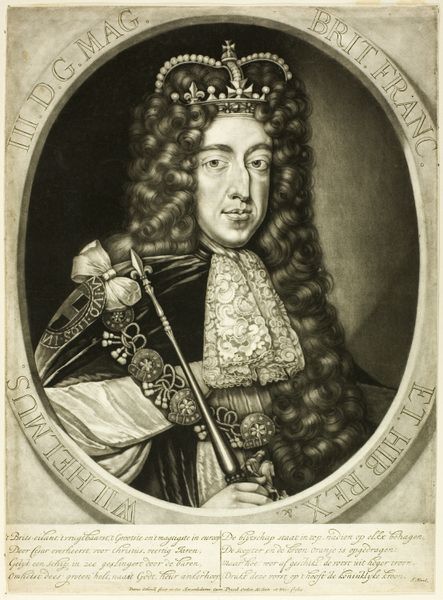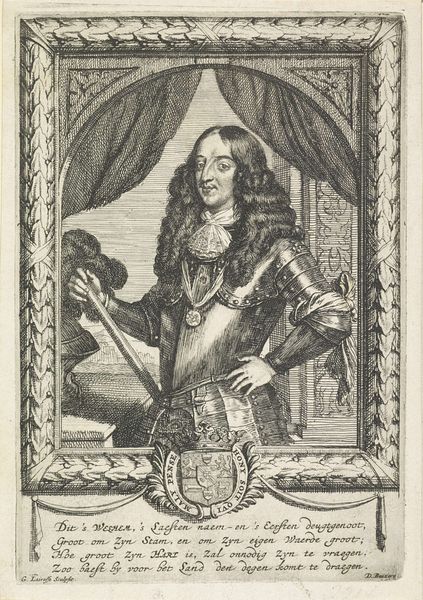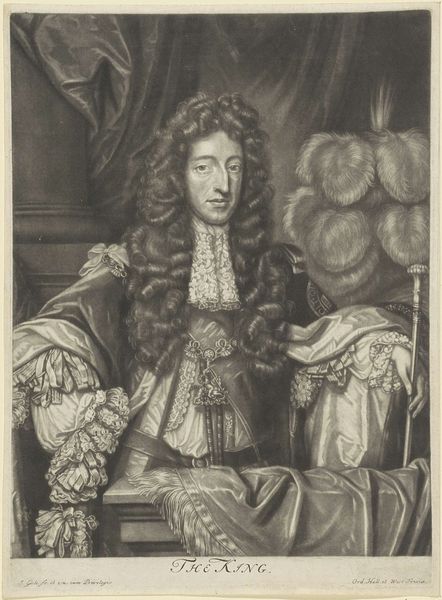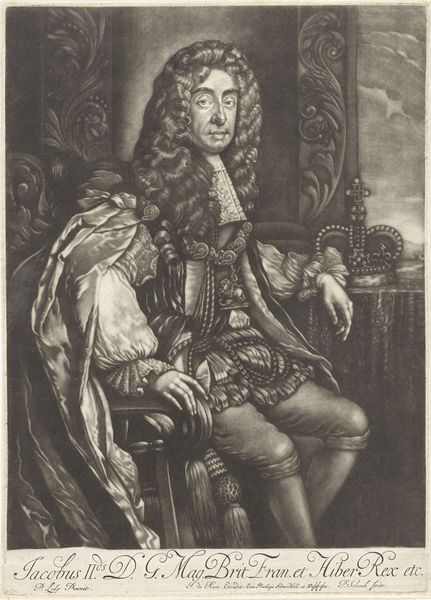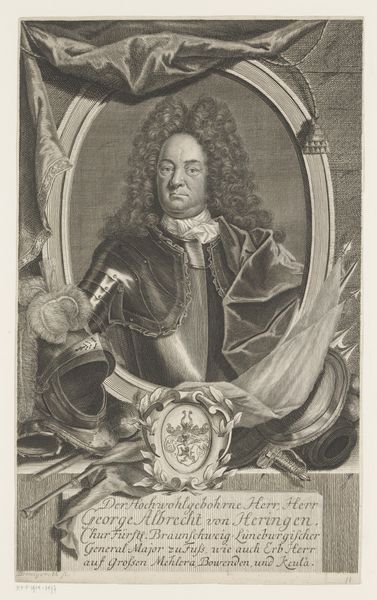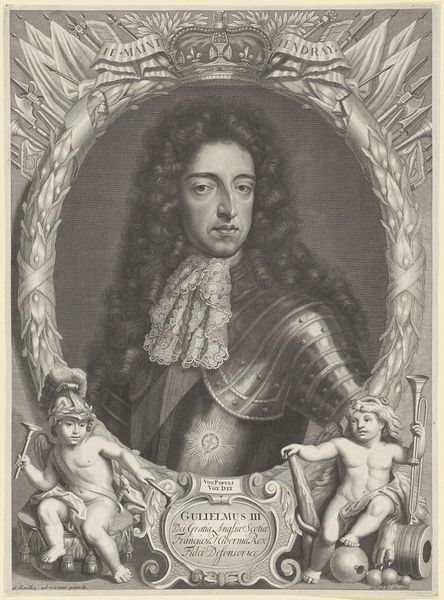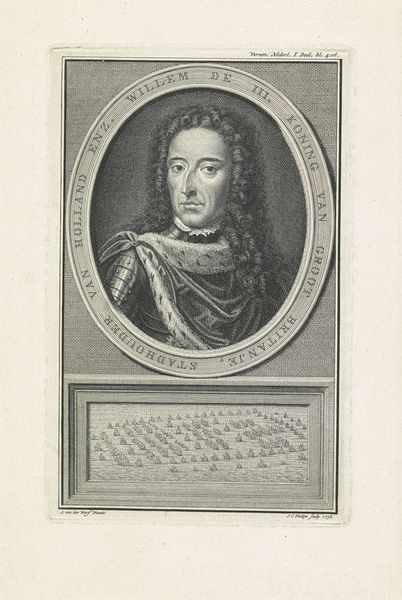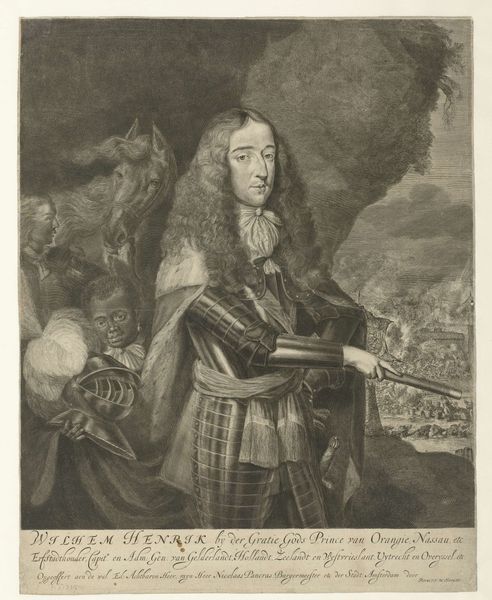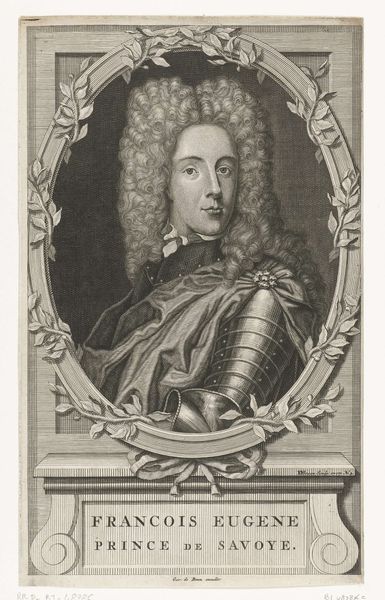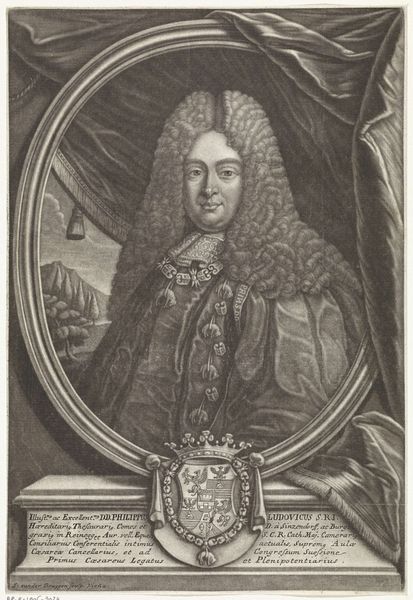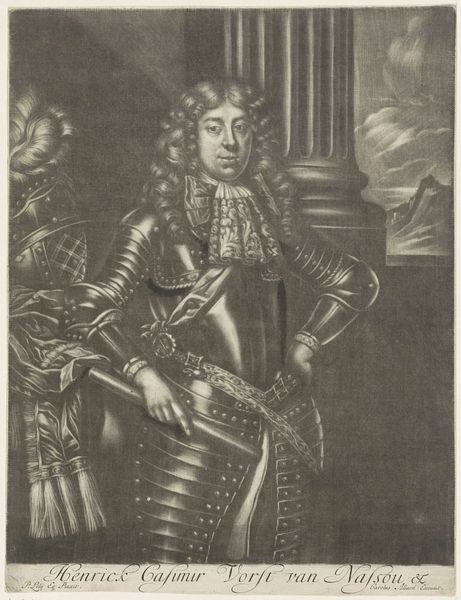
drawing, engraving
#
portrait
#
drawing
#
baroque
#
pencil drawing
#
line
#
portrait drawing
#
history-painting
#
engraving
Dimensions: height 525 mm, width 418 mm
Copyright: Rijks Museum: Open Domain
Curator: Here we have an engraving dating between 1673 and 1709, titled "Portret van Willem III, prins van Oranje," attributed to Anthony van Zijlvelt. Editor: It strikes me as an image caught between worlds—the delicate lines of the engraving give him an almost ghostly appearance, but there's a distinct heft to the armour and textiles surrounding him. An almost baroque heaviness, actually. Curator: Yes, consider the materiality of it all—the artist using lines, essentially a form of manufactured scarcity on paper, to represent the princely weight and value through meticulous detail. That drapery had to be convincing as fabric, his status defined not just by his face but through the very depiction of opulence! Editor: Precisely. You see it too, that tension? His hand on what seems to be the handle of a lance or another piece of his armour feels less like a grasp of power, and more like holding it to prop himself up. As if all of these material possessions, the weight of lineage, threatens to topple him. Does that read too dramatically? Curator: Not at all, in these historical portraits every detail is deliberate, constructing meaning to ensure that consumption is aspirational but, the real success, I think, comes when, like you noted, we read against its intention. This isn't merely a symbol of wealth but the labour, the material sources, the social constructs that reinforce power and permit privilege, rendered for a market—that has to say something more! Editor: Absolutely! I see the layers of expectation piled high on him, and I feel it emanating from this work. Though, who is the intended market here and to what extent do they reflect? That may affect our understanding. Curator: The market would have been affluent, noble perhaps, people familiar with emblems and history. But the method in which Van Zijlvelt deployed his labour ensured its status of artistry remained accessible, allowing wide scale printing. Editor: It makes me consider all the invisible hands, and raw elements—minerals, metals, oils, wood pulp—all formed meticulously so that a statement on power could be captured. Fascinating. Thank you. Curator: My pleasure, what initially seems a study in controlled status really demonstrates, as we discussed, the complexities of the very act of creating power.
Comments
No comments
Be the first to comment and join the conversation on the ultimate creative platform.


